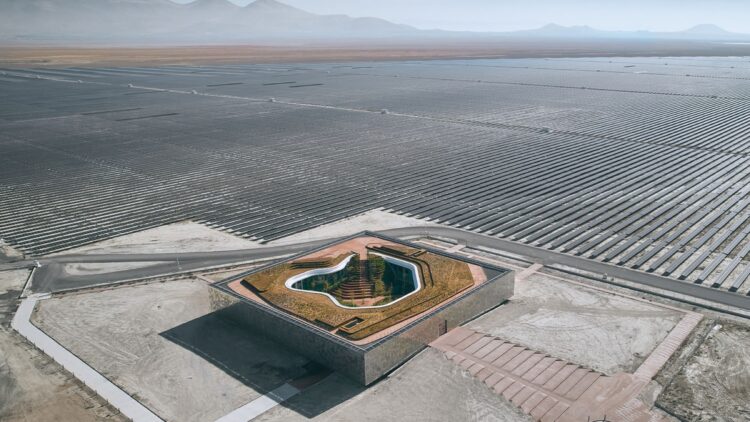In an ambitious move that underscores its dominance in the renewable energy sector, China has recently connected the world’s largest solar power facility to the grid in the vast deserts of northwestern Xinjiang. This megaproject signifies not just an environmental milestone but also a stark reminder of shifting global energy dynamics. However, as the United States grapples with its energy policy and trade tensions, China’s advancements raise questions about the future of energy independence and sustainability.
Xinjiang solar farm: A leap forward in sustainable energy
Xinjiang, a desert region abundant in solar and wind resources, is quickly evolving into a renewable energy hub. This transformation is essential for facilitating the transfer of clean energy to China’s densely populated eastern seaboard.
The newly operational solar farm in Xinjiang spans 200,000 acres and boasts an impressive capacity of five gigawatts. It has the potential to generate over 6.09 billion kilowatt-hours of electricity annually. This is sufficient to power a nation such as Papua New Guinea for a full year.
This megaproject surpasses previous record-holding solar power initiatives in western China, including the Ningxia Tenggeli and Golmud Wutumeiren projects, both of which have a capacity of three gigawatts. Notably, the advancements in Xinjiang’s renewable energy sector not only showcase the region’s capabilities but also play a crucial role in the East Asian country’s overall energy strategy and sustainability goals.
This cutting-edge solar farm sets new standards for the renewable energy sector
Per recent research from Xi’an University of Technology, their findings show that installing solar panels in arid environments such as deserts not only generates a substantial amount of clean energy but also improves local ecosystems.
The study, conducted at the Qinghai Gonghe Photovoltaic Park, revealed that solar installations boost microclimate, soil quality, and vegetation biodiversity. Utilizing the Conduction-Pressure-State-Impact-Response model, the researchers found that areas situated beneath solar panels demonstrate significantly greater ecological health compared to surrounding regions. This suggests that solar parks can foster better environmental conditions and support plant and microbial life in desert landscapes.
In 2023, China’s renewable energy capacity increased by more than 50%, earning praise from the International Energy Agency for the country’s dedication to clean energy. The agency anticipates that China will contribute nearly 60% of the global growth in renewable energy by 2028.
With these projections in mind, the growth of solar power infrastructure has major implications for global energy policy.
What do China’s efforts mean for America and the rest of the world?
However, the rapid growth in this sector has introduced challenges, particularly concerning overcapacity and trade tensions, especially in America. In May, President Joe Biden responded to worries of a global market glut by doubling tariffs on Chinese solar cell imports from 25% to 50%. This move highlights concerns regarding China’s massive photovoltaic power generation, which could possibly displace America in the renewable energy market.
In a way, China’s renewable energy sector, exemplified by the solar farm in Xinjiang, serves as a warning for other countries. Successfully harnessing viable sources will be crucial for future energy security and geopolitical influence. As the East Asian nation increases its solar capacity, the energy landscape worldwide is evolving, necessitating a reevaluation of current energy strategies.
As such, these changes have profound implications for traditional power structures. Countries must thoroughly navigate energy strategies to remain competitive and secure. This changing landscape emphasizes the need for innovation and collaboration within the global renewable energy industry.
Clearly, the Xinjiang solar megaproject showcases China’s renewable energy leadership. It also reveals the complex relationship between environmental benefits and international trade conflicts. Hopefully, lessons from this project will positively influence energy strategies.

